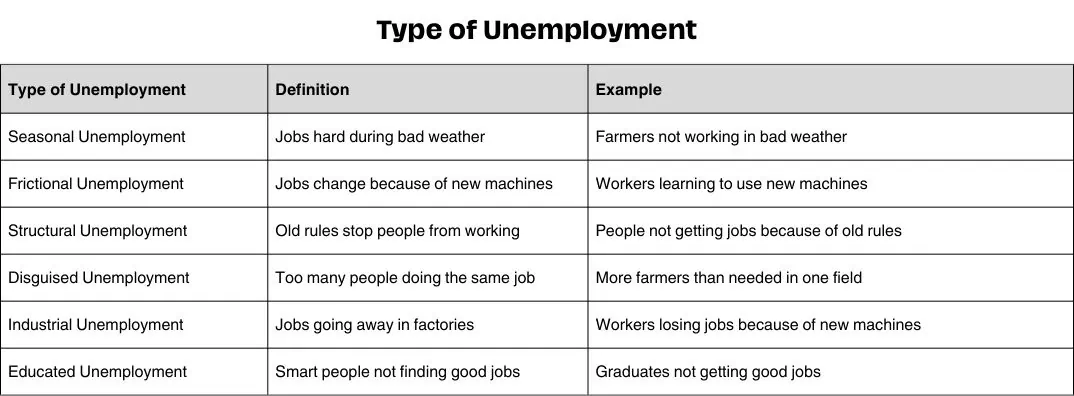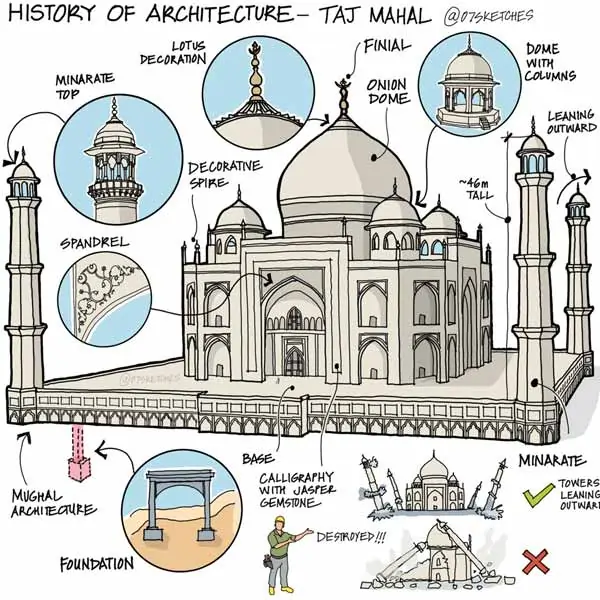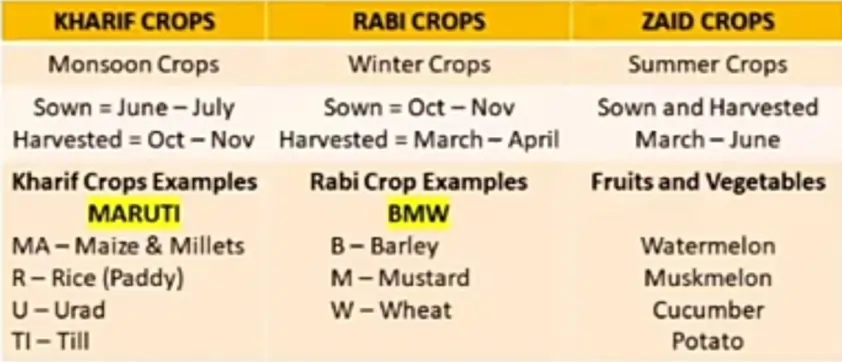Here we have listed the top 20 Most Important GSEB Social Science Question with their Answer. The following questions are sorted out after the analysing last 4 years question papers so that you get the best and save your time over preparation.
These question are those that has already been appeared in exams. We have also provided the answer of each questions.
Last 5 GSEB Previous Year Question Papers Class 10 Solution PDF
1. “India is a land of ancient culture.” Explain the statement
- India has many different cultures with unique traditions.
- People in India follow various religions and belong to different communities.
- Indian culture includes languages, religions, dance, music, food, and customs.
- Each part of India has its own special traditions and practices.
- India’s culture is not the same everywhere; it changes from one place to another.
- Different regions have their own languages, food, and customs.
- India’s culture comes from a very long time ago, influenced by its ancient history.
- Many things in Indian culture have developed over many centuries.
- Indian culture has spread around the world.
- Things like Indian religions, philosophy, food, dance, and movies are liked and followed globally.
- Indian culture is like a mix of many cultures.
- Different traditions come together to create a unique and lively culture.
- India’s culture has a big impact outside its borders.
- People everywhere appreciate Indian arts, traditions, and spirituality, showing how special it is globally.
2. “Aryans were nature lovers.” Explain the statement.
- Aryans were a powerful tribe in ancient India, and their land was called Bharatbhumi, Bharatkhand, or Bharat Varsha after their king Arya Bharat.
- They loved nature a lot and respected things like trees, rivers, mountains, sun, wind, and rain.
- Aryans worshiped these natural elements because they considered them sacred. They wrote hymns and prayers to show their love and devotion.
- Aryans brought new religious ceremonies to India, like reciting Vedas and performing yagyas. These practices became widespread due to their influence.
- Aryans not only influenced religion but also brought a deep appreciation for nature in India. Their hymns and rituals showed how much they loved and respected the natural world.
3. “Script writers have said that Bhavai is an emotional oriented drama.” Why?
- Bhavai is a traditional drama from western India, started 700 years ago by Asait Thakar in Gujarat.
- No curtains are used, and it includes light humor and trumpet music.
- Characters like Ramdev, Jhanda, Jhulan, Kajoda add special elements.
- Bhavai teaches and entertains, talking about social issues.
- Rangla-Rangli promotes causes like girls’ education and protecting girls.
- Performers play the trumpet, engage the audience, and pray to the Goddess.
4. “In Gujarat during Solanki Era, The Patolas of Patan become world famous.” Why?
- Patan thrived in Gujarat during the Solanki Era, led by Siddharaj Jaysingh.
- Skilled artisans, especially weavers, moved to Patan during this time.
- They specialized in crafting Patola sarees, known for ‘bevad ikat’ weaving.
- Patola sarees are double ikat, with tie-dyed warp and weft threads.
- They boast perfect symmetry, allowing interchangeability when worn.
- Patola sarees are exceptionally durable and can last for many years.
- Vibrant colors of Patola sarees remain bright over time.
- Unique features made Patola sarees famous globally during the Solanki Era.
- Patolas of Patan gained a reputation worldwide, becoming highly sought-after pieces of craftsmanship.
5. State and define the types of unemployment seen in Indian economy and give examples.

Seasonal Unemployment:
- Definition: Occurs due to factors such as lack of irrigation facilities, irregular rainfall, and a shortage of alternative employment opportunities.
- Example: Farmers in India may face unemployment for 3 to 5 months during seasons with adverse agricultural conditions.
Frictional Unemployment:
- Definition: Arises when new technology replaces old technology, causing a temporary unemployment period for laborers.
- Example: Workers transitioning from manual labor to automated processes may experience frictional unemployment.
Structural Unemployment:
- Definition: Result of social backwardness, traditional orthodoxy, customs, illiteracy, and a lack of structural facilities in the economy.
- Example: The presence of outdated skills and practices that hinder employment opportunities, particularly in regions with underdeveloped infrastructure.
Disguised Unemployment:
- Definition: Occurs when more workers are engaged in an occupation than necessary, and removing a few laborers does not impact overall production.
- Example: Agricultural activities with excessive labor, where the removal of some workers does not affect the overall yield.
Industrial Unemployment:
- Definition: Involves short or long-term unemployment in the industrial sector due to changes or shifts in the industrial landscape.
- Example: Workers facing unemployment because of technological advancements or economic shifts impacting specific industries.
Educated Unemployment:
- Definition: Refers to the situation where individuals with at least secondary education or a degree are unemployed.
- Example: Graduates who are unable to find suitable employment opportunities despite their educational qualifications.
Understanding these types of unemployment is crucial for devising effective policies and strategies to address the diverse challenges faced by the Indian economy in the labor market.
6. Write the full form of the following and name the product where they used.
| Abbreviation | Full Form | Product/Application |
|---|---|---|
| ISI | Indian Standards Institute (ISI) | ISI mark on textile, chemicals, rubber, cement, electronics, pesticides, insecticides |
| AGMARK | Agricultural Produce (Grading and Marking) Act | AGMARK on farm, horticulture, and animal products by Directorate of Marketing and Intelligence (DMI) |
| BIS | Bureau of Indian Standards (BIS) | BIS marks assure gold quality/purity; used on gold products |
| FPO | Fruit Products Order (FPO) | FPO mark on tinned jam, fruit juices, squash, fruits, and vegetables |
| Woolmark | Woolmark | Given for woollen products |
| MPO | Meat and Mutton Products Order (MPO) | MPO mark for meat and mutton products |
| HACCP | Hazard Analysis and Critical Control Point | HACCP given to processed foods |
| Eco mark | Eco mark | Given to soaps, detergents, paper, lubricants, packing material, color, chemicals, power coating, battery, cosmetics, leather, and plastic products |
7. Why is child labour very much in demand?
Understanding why child labour is common:
- Kids are paid less money for the work they do.
- Employers like this because they save money.
- Kids cannot say no or complain about bad treatment.
- They are not organized to speak up against unfair work.
- There are lots of poor kids who need work.
- Poverty makes it hard for families, so kids work to help.
- Parents who can’t read or are poor send kids to work.
- It helps families survive, but it’s not good for the kids.
8. State the important reasons for child labour.
These are the following important reason for Child Labour
Poor Governance:
- Happens when leaders don’t enforce rules.
- Laws not followed well.
Poverty:
- Families are very poor.
- Kids work to help family survive.
Parents’ Lack of Education:
- Parents don’t know how important school is.
- They need money now, not education.
Big Families:
- Large families struggle with money.
- Kids work to support family.
No Jobs for Adults:
- Adults can’t find work.
- Kids work because no other choice.
More Money for Family:
- Families want more money.
- Kids work to earn extra.
Moving to Cities:
- Families move to cities for work.
- Kids end up working in bad conditions.
Kidnapping and Trafficking:
- Some kids forced to work.
- No one to protect them.
Hunger and No Home:
- Kids work for food and a place to stay.
- Survival is more important.
Working for a Place to Stay:
- Kids work to have a place to live.
- Compelled to work for shelter.
Understanding these reasons helps stop child labour and make a better future for all kids.
9. State the efforts made by the government to abolish child labour.
Government Efforts to Abolish Child Labour:
Constitutional Provisions:
- Children below 14 cannot work in jobs, occupation or factories.
- Employers breaking this rule face legal consequences.
Protecting Children’s Rights:
- Children should be safe from harm and exploitation.
- Government ensures their physical and moral safety.
Compulsory Education Law:
- In 2009, a law made education compulsory for kids aged 6 to 14.
- Both central and state governments support this rule.
Free Education:
- Government promises free education for all kids up to 14 years.
- A commitment to be fulfilled within 10 years from adopting the constitution.
These efforts work together to end child labour by prioritizing education and making sure children are safe and protected.
10. Write about the progress made by Aryabhatta in mathematics.
Aryabhatta, ancient Indian mathematician, know as ‘father of Mathematics’. His contribution in Math field is really important
Key Work:

- Discovery of Zero: Aryabhatta is credited with the discovery of ‘zero’ (0) in mathematics.
- Constant pi (π): He observed the ratio of circumference to diameter of any circle is always constant which is pi (π ). He estimated π =3.14 or 22/7
- Ashtanga Method: Provided insights into the Ashtanga method for multiplication, addition, subtraction, square root, cube root, etc.
Literary Contribution:
Apart from ‘Aryabhattiyam,’ Aryabhatta authored additional significant books that showcased his diverse and profound mathematical understanding.
- Astronomy in ‘Aryasiddhanta’: Explored astronomy in ‘Aryasiddhanta,’ showcasing versatility and outlining fundamental principles.
- Dash Gitika: Wrote ‘Dash Gitika’ and contributed influential works to math literature.
- Solutions in Arithmetic and Geometry: Aryabhatta’s deep knowledge reflected in solutions for arithmetic and geometry basics.
Aryabhatta’s lasting impact comes from ‘Aryabhattiyam’ and ongoing inspiration through his literary contributions, influencing mathematicians worldwide.
11. Describe architectural style of Taj Mahal.

Location and Significance:
- Located on the bank of the Yamuna River in Agra, Uttar Pradesh.
- One of the Seven Wonders of the World.
- Constructed by Mughal King Shahjahan in memory of his wife Mumtaz Mahal.
Construction Timeline:
- Construction started in 1631 AD, one year after Mumtaz Mahal’s death in 1630 AD.
- Completed in 1653 AD, taking 22 years to finish.
Purpose and Inspiration:
- Built as a tomb (maqbara) for Mumtaz Mahal.
- Shahjahan’s desire to immortalize Mumtaz Mahal’s name led to the construction of Taj Mahal.
Architectural Features:
- Blend of Indian, Persian, and Islamic styles.
- Craftsmen from India, Iran, Arabia, Turkey, and Europe.
- Rectangular layout extending from north to south.
- Mumtaz Mahal’s grave at the center with an artistic octagonal stone fence.
- Represents the pinnacle of Mughal architectural style.
- Inscription on one of the arches: “Pious hearts are welcomed in the garden of paradise.”
- The construction includes intricate inscriptions and designs.
- Artistic elements showcase a blend of Indian, Persian, and Islamic architectural styles.
Symbol of Mughal Architecture:
- Represents the pinnacle of Mughal architectural style.
- Reflects the grandeur and richness of India’s cultural heritage.
Cultural Significance:
- Taj Mahal attracts thousands of visitors annually.
- An enduring symbol of love and a testament to the artistic and cultural achievements of the Mughal era.
12. What is poverty? What are the characteristics of the people living below poverty line?
Poverty is a qualitative term that denotes the lowest (sub-human) level of life. It is a situation wherein a large number of people are unable to satisfy even their basic requirements of food, clothing, shelter, education and health.
Characteristics of People Below Poverty Line:
- Inability to get two meals a day.
- Non-availability of adequate place of dwelling and as such forced to live in slum areas.
- Income inadequate to meet the required expenditure.
- Mostly illiterate.
- Lifespan below the national average (70 years).
- High death rate due to malnutrition and starvation.
- Lack of nutritious food accounts for high infant mortality rate.
- Child labour forced upon the family.
13. In which different ways is a consumer exploited?’
Ways in which a consumer may be exploited:
- Underweight Products: Supplying goods with less weight than printed on the packaging.
- Defective or Fake Goods: Supplying slightly defective or counterfeit commodities, misleading consumers.
- Overpricing: Charging higher prices than the fair market value for products or services.
- Adulteration: Offering goods that are adulterated, compromising their quality and safety.
- Unsatisfactory After-Sale Services: Failing to meet consumer expectations in terms of post-purchase support and services.
- False Advertisements: Misleading customers, especially in sectors such as banking, insurance, mobile services, and healthcare.
- Deceptive Practices: Exploiting unaware customers, sometimes resulting in both physical and mental harassment.
- Incomplete Information: Withholding crucial details or creating artificial scarcity to manipulate consumers.
14. What is corruption? Explain.
Corruption is when people misuse their power for personal gain, as defined by the World Bank. It happens when individuals use their authority for their own benefit.
Nature:
- Corruption involves dishonest actions, like giving money or gifts to influence someone.
- Giving money for personal favors is called bribery.
Forms:
- Bribery can be money, gifts, or expensive items like ornaments.
- Corruption includes showing favoritism and influencing decisions.
Prevalence in India:
- Corruption is common in India in both public and private sectors.
- Giving and taking bribes is widespread, creating a culture of corruption.
Responsibility:
- Both the giver and receiver of a bribe are equally responsible for corruption.
- Both should face punishment for their actions.
15. State the effects of corruption on the economy and the society.

Moral Degradation:
- Corruption harms moral values and societal rules.
- Weakens the foundations set for the community.
Black Money Problem:
- Corruption leads to the emergence of black money.
- Hinders the country’s development.
Hindrance to Development:
- Black money, fueled by corruption, obstructs progress.
- A significant barrier to national advancement.
Eroded Trust:
- Honest people lose trust in laws, the judicial process, government, and the system.
- Results in frustration and disappointment.
Injustice and Income Disparity:
- Corruption causes income inequality and social class struggles.
- Leads to human rights violations.
Risk to Morality and National Character:
- Corruption jeopardizes the nation’s morality and character.
- Ethical values are compromised.
Weakened Economic System:
- Pervasive corruption weakens the economic system.
- Misallocation of resources and compromised growth.
16. Explain the difference between rebellions and terrorism Answer:

| Aspect | Rebellion | Terrorism |
|---|---|---|
| Nature | National issue, regional focus against own government | Global problem, can be against own or other countries |
| Local Support | Relies on local support | May or may not have local support |
| Scope | Regional level | International level |
| Development Impact | Hinders the development of the state | Hinders the development of countries suffering from terrorism |
| Violent Acts | Directed against the national government | Can be directed against own nation or other nations |
| Involvement of People | Involves local people in the rebellion | May or may not involve local communities |
| Global vs. National Focus | Primarily national with regional implications | Extends beyond national borders, with global ramifications |
17. Write a detailed note on Vastushastra.
About Vastushastra:
- Vastushastra is the science of architecture, with roots in ancient India.
- It encompasses guidelines for constructing various structures, including houses, temples, palaces, and town planning.
- Vishwakarma, considered the first architect of Gods. He Divided Vastushastra into eight sections, covering various aspects.
- Changes observed in Vastushastra over time.
- Initially explained with a religious perspective in the east, now viewed scientifically worldwide.
Notable Contribution and Roles in Vastushastra:
- Key contributors include Brahma, Narad, Brahaspati, Bhrugu, Vashishtha, and Vishwakarma.
- Varahmihir elaborated on Vastushastra in ‘Brihat Samhita,’ covering principles and details in eight sections.
- Rana Kumbha of Mewar played a crucial role in reviving and improving Vastushastra in the 15th century.
Religious to Scientific Perspective Of Vastushastra:
- Originally explained with a religious perspective in the east.
- Over time, Vastushastra evolved into a subject viewed scientifically worldwide.
- Its principles now extend beyond religious contexts, gaining global recognition for India’s contributions in the field.
18. Mention the total number of Sanctuaries, National Parks and Bio- reserves in India and in Gujarat
| Category | India | Gujarat |
|---|---|---|
| Sanctuaries | 531 | 23 |
| National Parks | 103 | 4 |
| Bio-reserves | 18 | 1 |
19. Give difference between Kharif Crop and Rabi crop.

20. Explain the meaning of Natural Heritage of India and state what does it comprise of?
Natural heritage refers to the sum total of the elements of biodiversity, including flora and fauna, ecosystems and geological structures.
Features of India’s Natural Heritage:
- India has cool stuff like mountains, forests, deserts, rivers, oceans, and lots of different plants and animals.
- India’s nature gives us important things like food, water, fresh air, and homes for everyone.
- Indians have always respected nature and even made it part of their prayers since a long time ago.
- Stories like ‘Panchatantra’ and ‘Jataka Tales’ show how much Indians love nature in their culture.
- Indian music is inspired by nature, like the different times of the day, and it’s super cool!
- Ancient medicines in India, like Ayurveda, Unani, and Naturopathy, are all about nature’s principles.
Most Important GSEB Social Science Question Answer PDF Download
Welcome to a valuable resource for board exam preparation – the Most Important GSEB Social Science Question Answer PDF.
Designed specifically for students facing Gujarat Secondary and Higher Secondary Education Board (GSEB) exams, this comprehensive PDF download is an indispensable tool.
Packed with essential social science questions and detailed answers, it serves as a strategic guide for mastering the subject matter.
Elevate your exam readiness and boost your confidence with this carefully curated material, ensuring you’re well-equipped to tackle the challenges of the upcoming board exams.

